Introduction
Among the stunning aquatic fauna of Lake Tanganyika in East Africa, the Cyphotilapia frontosa, commonly known as Frontosa, stands out as one of the most remarkable cichlid species. Renowned for its striking appearance and fascinating behaviors, Frontosa is a slow-growing, long-lived fish that thrives in the rocky habitats of this ancient lake. Its unique ecological niche, captivating social structure, and critical role in the lake’s ecosystem make it an essential subject of study for ecologists and aquarists alike.
This article explores the environmental niche of Frontosa, examining its habitat, diet, behaviors, reproduction, ecological significance, and the challenges it faces in a changing world. By understanding the role of this iconic cichlid, we can better appreciate the intricate balance of Lake Tanganyika’s ecosystem and the importance of conserving its biodiversity.
1. Taxonomy and Physical Characteristics of Frontosa
Frontosa is a member of the family Cichlidae, one of the most diverse fish families in the world, with species adapted to a wide range of ecological roles.
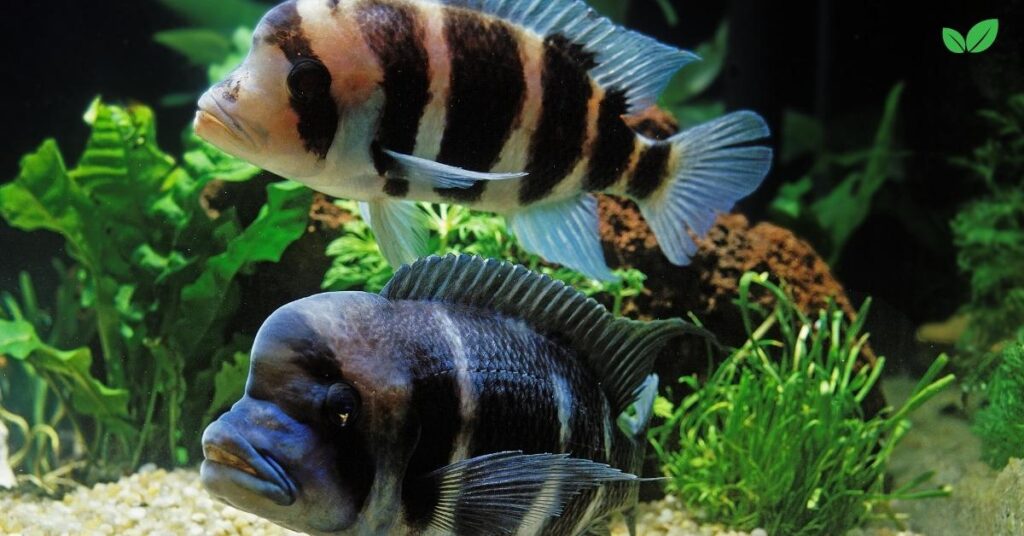
Taxonomy
- Kingdom: Animalia
- Phylum: Chordata
- Class: Actinopterygii
- Order: Cichliformes
- Family: Cichlidae
- Genus: Cyphotilapia
- Species: Cyphotilapia frontosa
Physical Characteristics
- Body Shape: It has a large, robust body with a high dorsal profile, making it one of the most visually striking cichlids.
- Coloration: Its coloration typically includes alternating vertical black stripes on a white or bluish background, which serves as effective camouflage among rocks.
- Nuchal Hump: Mature males develop a prominent nuchal hump, a fatty deposit on the forehead that is a distinguishing feature of the species.
- Size: Adult Frontosa can reach lengths of up to 35 cm (14 inches) and weigh over 1 kilogram, making them one of the largest cichlids in Lake Tanganyika.
- Longevity: This species can live for over 20 years, reflecting its slow growth and late maturity.
2. Habitat and Distribution
It is endemic to Lake Tanganyika, the second-largest freshwater lake in the world by volume and one of the most biologically diverse aquatic ecosystems.
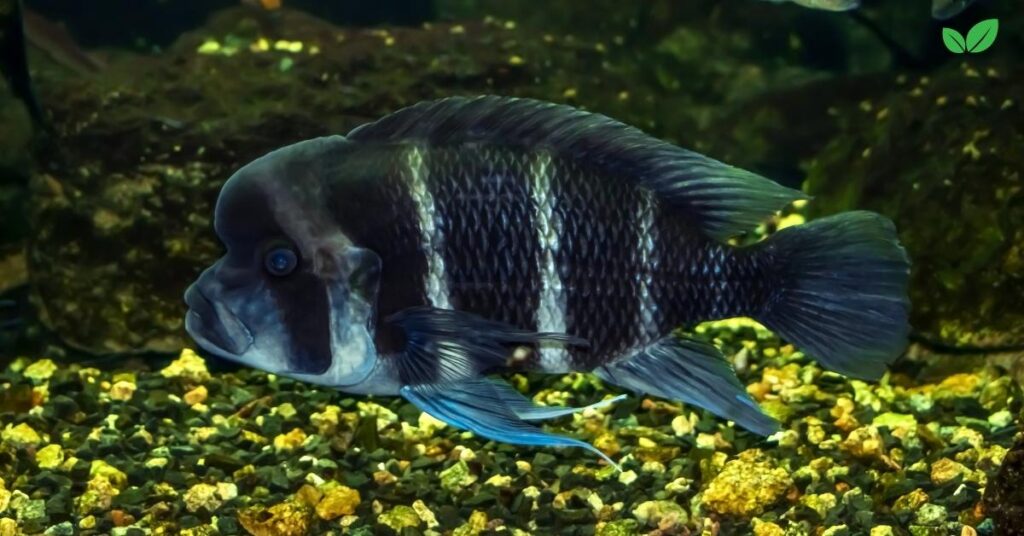
Preferred Habitat
- Depth Range: Frontosa is primarily found at depths of 10–50 meters, where the water is clear and stable.
- Rocky Substrates: It inhabits rocky reefs and slopes, which provide shelter, breeding sites, and hunting grounds.
- Water Conditions: Frontosa thrives in the alkaline, oxygen-rich waters of the lake, with temperatures ranging between 24–28°C (75–82°F).
Geographical Distribution
- Lake Tanganyika: This cichlid is distributed along the lake’s rocky coastlines, particularly in the northern and central parts of the lake. Its distribution is influenced by water depth, substrate type, and availability of prey.
3. Diet and Feeding Behavior
It is a carnivorous fish that exhibits specialized feeding behaviors, reflecting its role as a mid-level predator in Lake Tanganyika’s food web.
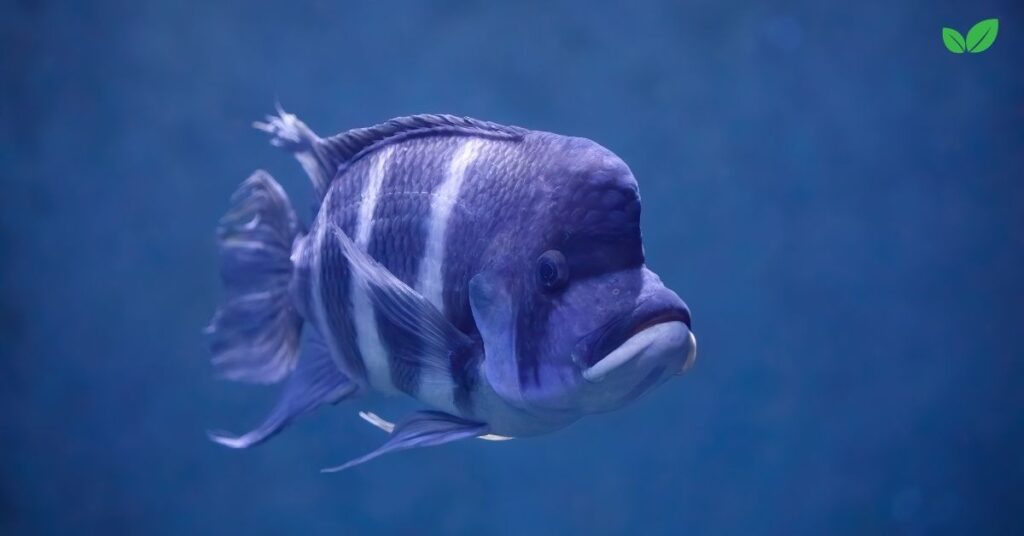
Diet
- Primary Prey: Frontosa primarily feeds on smaller fish, including cyprinids and juvenile cichlids. Its diet also includes crustaceans and aquatic invertebrates.
- Occasional Scavenging: While primarily a predator, it may scavenge on dead fish or other organic matter during periods of food scarcity.
Feeding Behavior
- Nocturnal Foraging: Frontosa is a crepuscular and nocturnal hunter, feeding primarily during dawn and dusk when prey is less vigilant.
- Ambush Predation: It uses the rocky substrate as cover, ambushing unsuspecting prey with short, powerful bursts of speed.
- Selective Feeding: Frontosa’s large size and slow metabolism allow it to be selective, often targeting nutrient-rich prey to sustain its energy requirements.
4. Behavior and Social Structure
Frontosa exhibits complex social behaviors that contribute to its survival and reproductive success in the competitive environment of Lake Tanganyika.
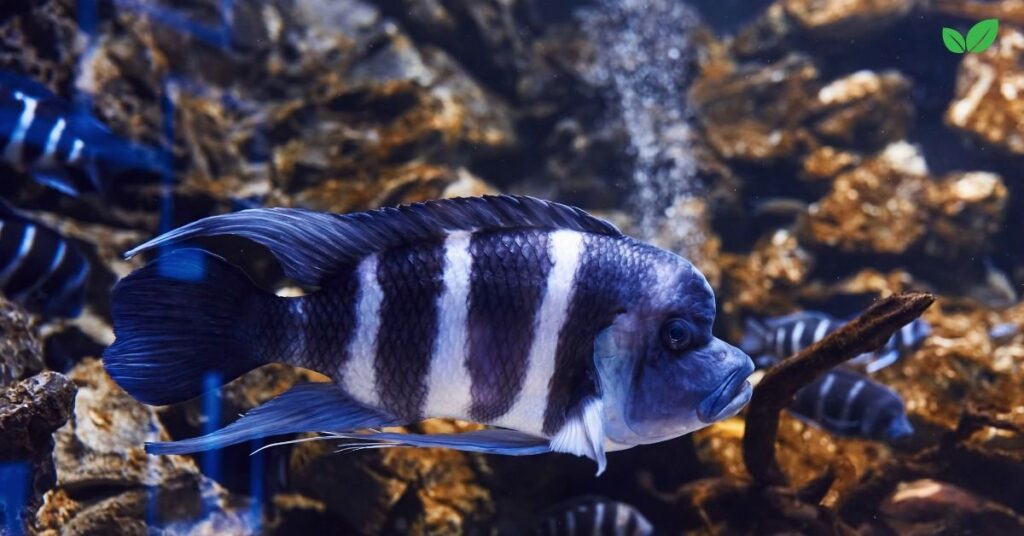
Social Hierarchy
- Dominance: Groups, or “harems,” are led by a dominant male, which controls access to prime feeding and breeding territories.
- Subordinate Males: Non-dominant males play a less active role in reproduction and often inhabit peripheral areas of the group’s territory.
- Female Groups: Females and juveniles form cohesive subgroups, contributing to the stability of the social unit.
Territoriality
- Dominant males establish and defend territories that include breeding caves or rock crevices.
- Aggressive displays, including fin spreading and body posturing, are used to deter intruders.
Communication
- Visual signals, such as color changes and body movements, are used during courtship and territorial disputes.
- Low-frequency sounds may also be produced to communicate dominance or attract mates.
5. Reproduction and Lifecycle
It has a slow reproductive rate, reflecting its long lifespan and investment in parental care.
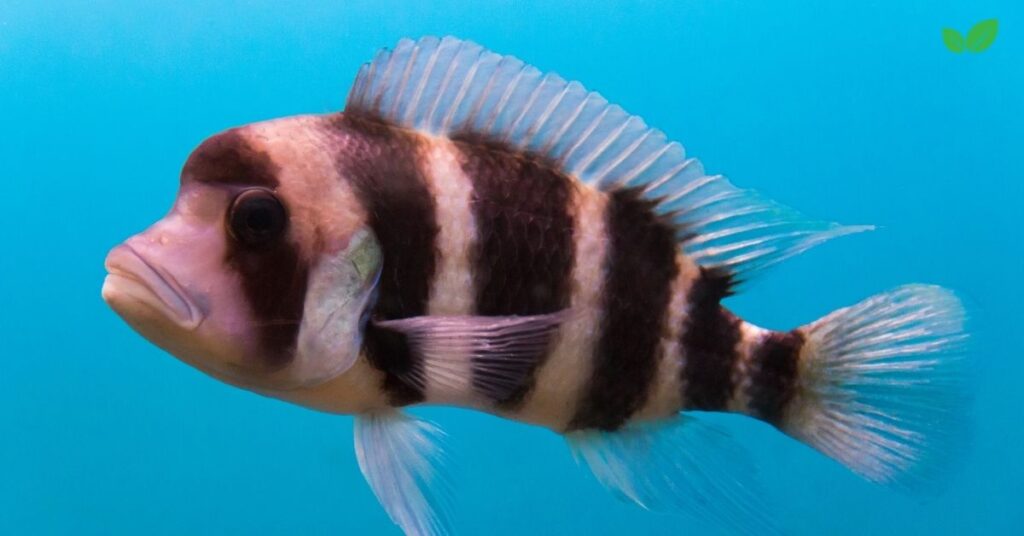
Breeding Behavior
- Mating System: Polygynous, with dominant males mating with multiple females within the group.
- Courtship: Males perform elaborate displays to attract females, often showcasing their nuchal hump and vibrant coloration.
- Spawning Sites: Females lay eggs in rock crevices or caves within the male’s territory.
Parental Care
- Maternal Mouthbrooding: Females collect fertilized eggs in their mouths and brood them for 3–4 weeks, protecting them from predators and ensuring optimal development.
- Juvenile Protection: After hatching, juveniles remain near their mother for several weeks, gradually becoming independent as they grow.
Growth and Development
- Slow Growth: Frontosa juveniles grow slowly, reaching sexual maturity at 3–5 years of age.
- Lifespan: With proper conditions, individuals can live for over two decades, contributing to the long-term stability of their populations.
6. Ecological Role of Frontosa
As a predator and prey, Frontosa plays a vital role in maintaining the balance of Lake Tanganyika’s ecosystem.
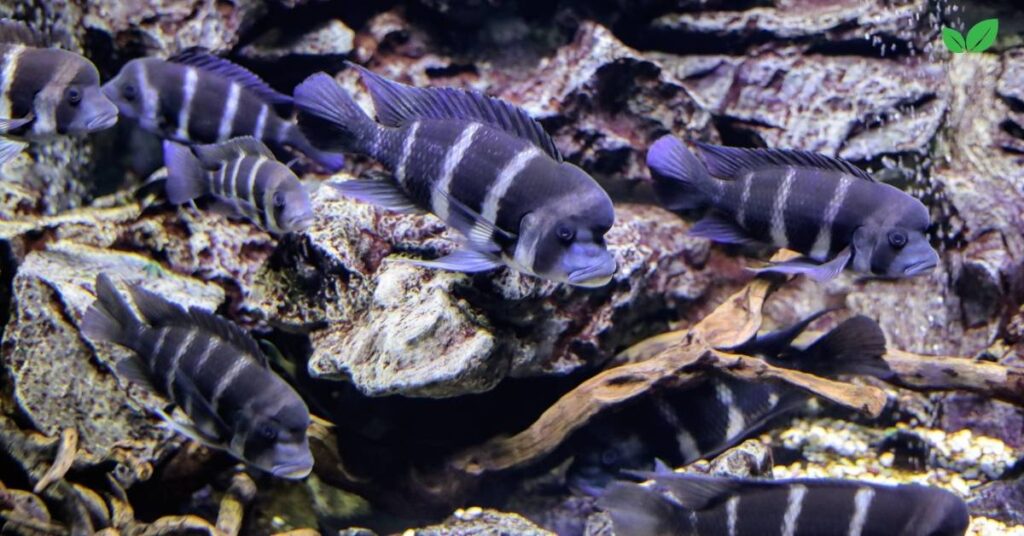
Regulating Prey Populations
By feeding on smaller fish and invertebrates, Frontosa helps control prey populations, preventing overpopulation and competition for resources.
Nutrient Cycling
- Frontosa contributes to nutrient cycling through the consumption of prey and the excretion of waste, enriching the lake’s ecosystem and supporting primary producers.
Prey for Larger Predators
- Juvenile Frontosa serve as prey for larger fish and birds, linking them to higher trophic levels within the food web.
Biodiversity Maintenance
- The presence of Frontosa supports the diversity and stability of Lake Tanganyika’s ecosystem by influencing the distribution and abundance of other species.
7. Threats to Frontosa
Despite its resilience and adaptability, it faces numerous threats that could jeopardize its survival.
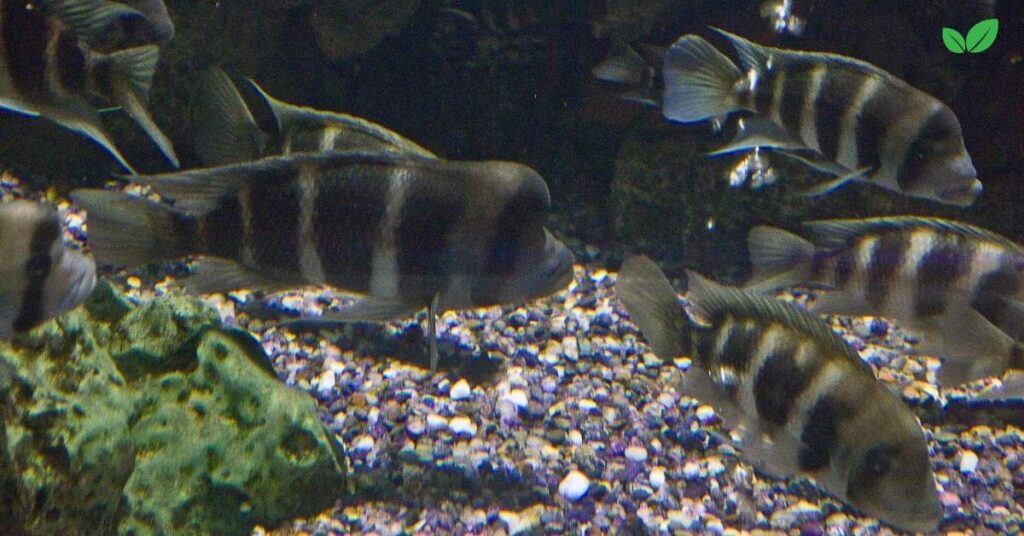
Overfishing
- Commercial Fishing: Frontosa is targeted for local consumption and the aquarium trade, leading to population declines in some areas.
- Unsustainable Practices: Destructive fishing methods, such as the use of explosives, damage habitats and reduce fish stocks.
Habitat Degradation
- Sedimentation: Increased sedimentation from deforestation and agricultural runoff reduces water quality and covers rocky habitats.
- Pollution: Industrial and domestic waste introduces toxins into the lake, affecting fish health and reproductive success.
Climate Change
- Rising temperatures and altered precipitation patterns can disrupt the delicate balance of Lake Tanganyika’s ecosystem, affecting oxygen levels and prey availability.
Invasive Species
- Introduced species, such as Nile perch, compete with native fish for resources and may prey on juvenile Frontosa.
8. Conservation Efforts
Protecting Frontosa and its habitat is essential for preserving the biodiversity and ecological integrity of Lake Tanganyika.
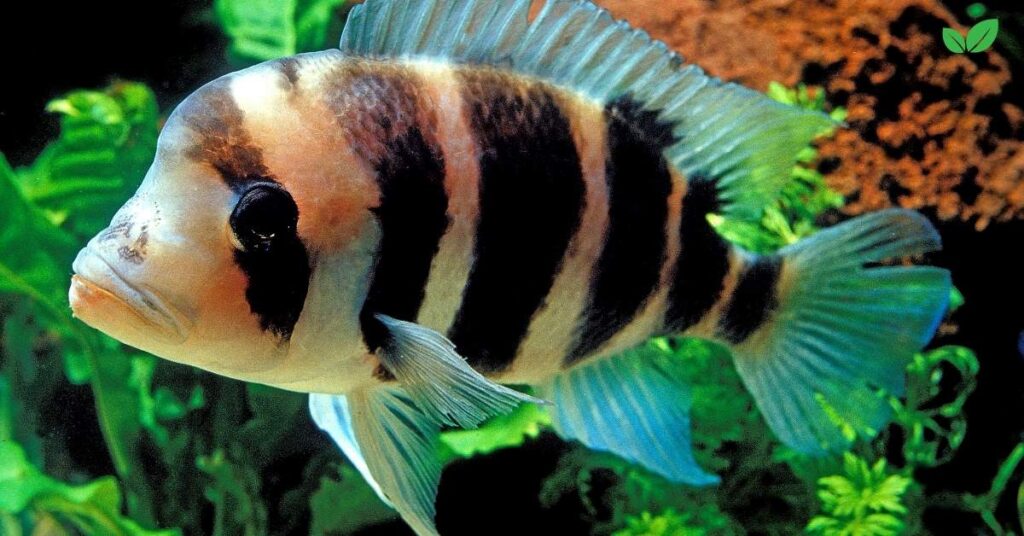
Habitat Protection
- Establishing marine protected areas within Lake Tanganyika can safeguard critical habitats and promote sustainable fishing practices.
- Reforestation and erosion control in surrounding areas can reduce sedimentation and improve water quality.
Fisheries Management
- Implementing quotas and size limits can prevent overfishing and allow Frontosa populations to recover.
- Promoting alternative livelihoods for local communities can reduce reliance on fishing.
Aquarium Trade Regulations
- Regulating the collection and export of Frontosa for the aquarium trade can ensure sustainable practices and protect wild populations.
- Breeding programs in captivity can reduce pressure on wild stocks while meeting demand.
Research and Monitoring
- Long-term studies on Frontosa populations, behavior, and habitat use can inform conservation strategies.
- Monitoring environmental changes in Lake Tanganyika can help predict and mitigate potential threats.
Conclusion
The Cyphotilapia frontosa is more than just an iconic fish of Lake Tanganyika; it is a cornerstone species that reflects the health and complexity of one of the world’s most remarkable freshwater ecosystems. Its unique adaptations, social structure, and ecological contributions underscore the importance of conserving this species and its habitat.
Protecting Frontosa requires a collaborative approach that integrates habitat conservation, sustainable fisheries management, and public awareness. By valuing the role of Frontosa in Lake Tanganyika, we contribute not only to the preservation of a single species but also to the broader goal of sustaining biodiversity and ecological balance in one of Earth’s most ancient and vital lakes.
Read More: Hippo Tang: Exploring the Environmental Niche and Ecological Importance of a Vibrant Reef Dweller
